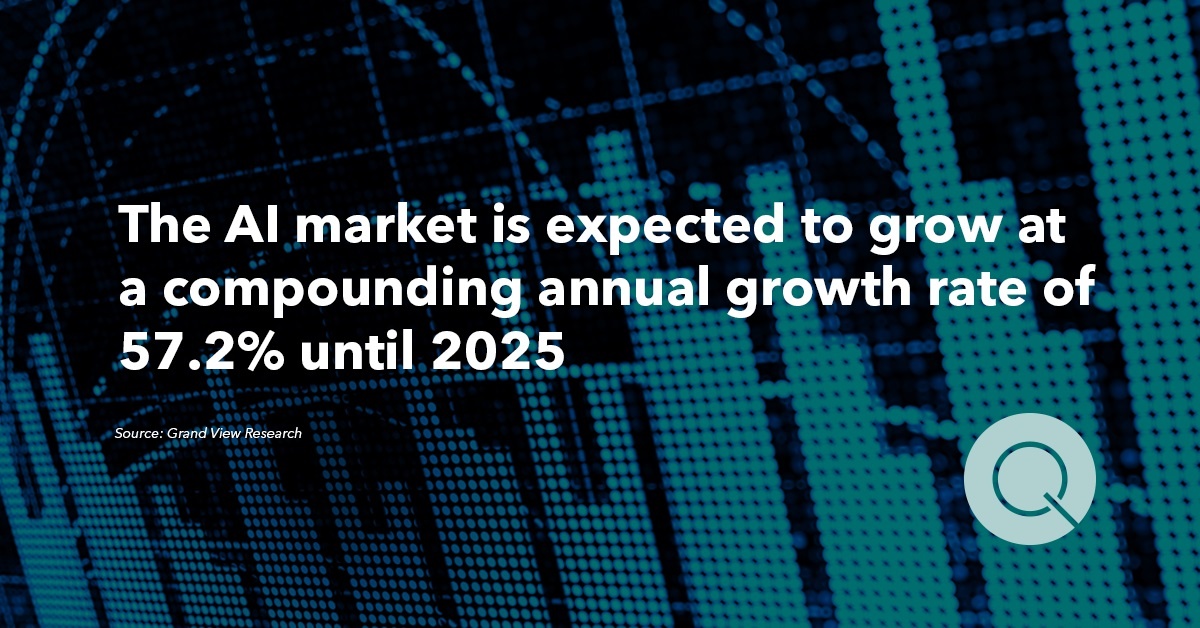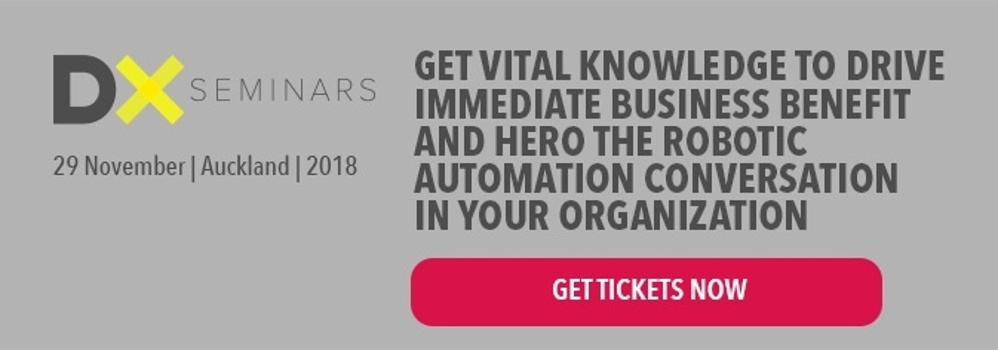
Artificial Intelligence (AI) and Machine Learning (ML) have become two of the most hyped technologies of the year and for many, there’s confusion around how they differ from Robotic Process Automation (RPA).
There’s certainly plenty of overlap - RPA can include ML or AI. But there are also distinctly unique with significant differences and despite the hype around AI, much bigger strides are being made with automation technologies such as RPA. More importantly RPA will be a critical platform to help organisations prepare for the benefits of AI and ML. We hit this topic in an exclusive podcast below and we're looking forward to hearing Professor Willcocks get into the details at our exclusive event on November 29th.
There’s certainly plenty of overlap - RPA can include ML or AI. But there are also distinctly unique with significant differences and despite the hype around AI, much bigger strides are being made with automation technologies such as RPA. More importantly RPA will be a critical platform to help organisations prepare for the benefits of AI and ML.
The distinguishing characteristic of RPA is the ability to consistently perform tasks and adhering to business rules in a deterministic manner. If you look at AI in its purest definition, it’s the ability of a machine to form judgements that are as good as a human. When these two capabilities are linked together – the ability to form judgements and the ability to complete tasks it’s easy to comprehend the value that can be realised for New Zealand businesses.
But here’s the thing: All the technologies that exist at the moment are not ‘intelligent’ in the true sense. Yes, they are smart, and they are advanced processing tools, but they are only producing a probalistic outcome, not forming judgements. Human level sentiment AI is still a long way away. We are not seeing any examples of general AI in the market at the moment, what we do have is a narrow field of AI, which has been trained to perform a specific set of tasks and decisions. Outside of these tasks they have limited capability. For example, an AI that has been trained to identify the makes and models of cars would not be able to read, understand and translate a page of a book in Mandarin.
In a more general sense AI is technology which has the ability to produce an outcome beyond the capacity or faster than human capability. It can ingest, analyze information, run scenarios and models on a scale and speed beyond the ability of a person. Importantly, in this sense AI is also not a single technology but a collection of ‘smart’ technologies. These technologies can be placed on a spectrum from those which can be applied commercially now with viable benefit such as machine learning, natural language processing voice or image recognition for example and those which are continuing to emerge such as deep learning.
While AI is seen as a silver bullet, the reality is that AI (and ML) are probabilistic
Your outcome will depend on how the algorithm was trained. That means that it’s critical they’re highly trained on a clean, rich source of data. Data has to be cleansed and tagged, the system has to be trained then tested and tested time after time, with feedback loops and mechanisms to improve and refine the learning process. And the results are not uniform. There can be significant investment and sometimes no tangible business benefits. We’ve seen a number of businesses sink money into vanity projects which have consumed much effort and cash with outputs that have often been damaging to the business’s reputation and customer interactions.
AI is not a single thing, but rather a collection of technologies
One of the challenges that businesses will face in the digital future is how to effectively integrate a wider range of modern technologies while managing the constraints of aging legacy systems. The second aspect to consider is that AI technologies are providing advanced processing, but the real benefit of AI can only be realized if humans are free from mundane tasks to focus on higher-value activity that plays to human strengths.
RPA is a cost-effective technology that can help businesses sweat legacy systems by enabling the virtual integration of system and to autonomously execute tasks. It can integrate disparate, systems from legacy to emerging technologies alike and interact with them to automate currently manual, repetitive processes. Some organisations still have key enterprise systems that have been in place since the ‘70s and in some cases there is no viable plan to replace them - and even if there was, the risk of replacing them is highly prohibitive. The ability to couple these with existing systems and advanced technologies and sweat them is gold.
One area that is particularly exciting opportunity is the meld between RPA and some of the technologies such as optical character recognition and natural language processing, enabling businesses to digitize data as well as tap into the large wealth of unstructured data (bearing in mind that 80% of data is unstructured and just 20% structured), rather than just focusing on structured digital data.
Focus on Building Assets and Capability, not just shiny technology
Treated as a tactical solution the benefit of RPA is limited to the narrow scope of cost control. We have always promoted that the real benefit of RPA can only be achieved when aligned to organizational strategy and treated as a strategic asset.
We are seeing rising interest in the market for AI but the risk of spinning up a ‘vanity’ project so that the organisation is perceived as ‘doing’ AI can have a detrimental impact. There are many examples in the market where this approach has been costly and damaging. It is important to ensure that when considering AI or RPA that the outcomes and objectives support the business’s strategy and there is value to be generated from the investment.
There is no question that there is incredible potential from the combination or RPA and AI to address existing business issues, create new business models and enable businesses realize some fantastic opportunities. The opportunity though, lies in building strategic capability that works with and enhances existing processes and systems. It is a journey, which is a point we expect Professor Willcocks will reinforce when he speaks on November 29th.

To summarise, AI, in a general sense is a range of technologies some of which can be applied now and some of which are still emerging. These technologies by themselves are not silver bullets and to deliver real benefit organizations must understand how to prepare to leverage them, especially through data cleansing.
The challenge that AI technologies will create is the exasperation the existing challenge technology teams face managing an already disparate mix of systems.
RPA is a platform that businesses can use to both prepare for and leverage the opportunities of AI in the initial sense by increasing the availability of transactional data and providing a solution to virtually integrate systems from aging legacy systems to targeted applications.
Treated as a capability, and not a tool or a platform the real opportunity will not be RPA or AI, but the convergence and utilization of both in tangent to achieve cognitive Automation.
RPA has the potential to bring real benefits for New Zealand businesses and get us ready for a future of AI and machine learning – and the time to start is now.




